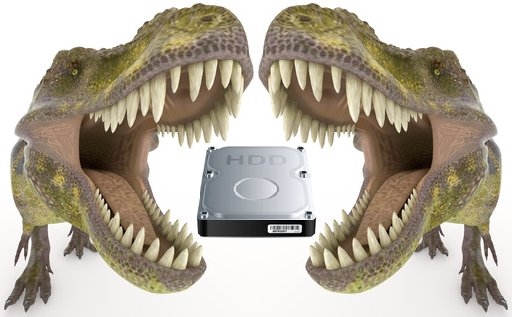
The right way to destroy an old hard drive
Don’t put it in the microwave, don’t roast it on a spit, don’t soak it in acid, and don’t put it next to an industrial-strength magnet; the key is to make the drive’s platters unspinnable.
I’m a confirmed pack rat. I’ve got stacks of old utility-bill statements dating back to the 1980s. Alongside the boxes of ancient paper records in our attic are about a half dozen old PCs. The jewel of my “collection” is an original 60-MHz Pentium PC, complete with the famous floating-point bug. Well, it was famous in 1994.
One benefit of holding onto these PC relics is not worrying about their data falling into the wrong hands. (OK, I suppose a determined thief could break into our attic and walk off with the computer antiques, but I wish them luck finding the cables and peripherals required to bring the machines back to life.)
Not everyone is so attached to their old electronic equipment as I am. You probably know that you need to completely wipe or remove the hard drives from your PCs before you donate or recycle them. How to ensure that the data on the drives will be out of the bad guys’ reach is another matter.
(On a related subject, don’t ever let a computer repair shop hold onto your old hard drive if they replace it. And don’t believe them if they say they returned the drive to the vendor. If they give you this spiel, call the cops and demand that they return the old hard drive to you, right then, right there.)
Free data-wiping program obliterates your data
If you want to keep the drive usable but totally erased, use the free Darik’s Boot and Nuke (DBAN), which comes in a version that runs off floppy disks and USB flash drives and another that runs off a CD or a DVD. The program’s interface won’t win any awards, but DBAN has a solid reputation among security experts.
Attack the platter to render a hard-disk unreadable
No matter how thorough a data-wiping program is, the only way to be certain that a hard-drive’s data is unrecoverable is by rendering the drive’s platters unspinnable. I’ve heard and read all kinds of methods people use to destroy an old drive, some of which are downright dangerous.
Put it in a fire? There are lots of toxic chemicals in that gadget. Do you really want to be breathing them or otherwise releasing them into the environment? Microwaves are handy for destroying CDs and DVDs, but you’d have to cook a hard drive for a long, long time to blister the drive’s platters.
Several Web sites suggest soaking the drive in diluted hydrochloric or muriatic acid. This might work, but you run the risk of burning yourself or breathing toxic fumes. Lots of people recommend breaking out the power tools and drilling several holes through the drive. You can achieve the same effect by pounding some nails through it, or simply by whacking the heck out of it with a hammer, sledge or otherwise.
I’m normally a big fan of brute-force methods, for the vicarious thrill if for no other reason. But the goal is to make sure you can’t spin the drive’s platters. There’s a more subtle approach that achieves this, without necessarily requiring safety goggles.
I found a great step-by-step tutorial written by David Gewirtz that describes how to disassemble a drive, remove the platters (and other components, including the drive’s magnets), and sand or grind the platter surfaces, which renders them unreadable.
David’s method requires the use of TORX driver bits to remove the small screws holding the drive’s case in place. These can set you back about $20, but you might be able to save the money by using a large, flat-head screwdriver to pry the case off.
David also suggests degaussing the platters by placing them between neodymium magnets before grinding their surfaces, which obliterates the data they hold. This strikes me as overkill, but I guess you can’t be too careful when protecting your private data. Making wind chimes out of the degaussed and sanded platters, as David’s wife did, is strictly optional.
You can let us to destroy your old hard drives. Call us (408)-403-5549 or submit the form
Clean Bay Area’s Asset Recovery process includes data sanitization according to the DoD 5220.22-M standard. This process, defined by the US Department of Defense, performs a multi-pass erasure of the entire disk to randomize all sectors.
Author: Dennis O’Reilly